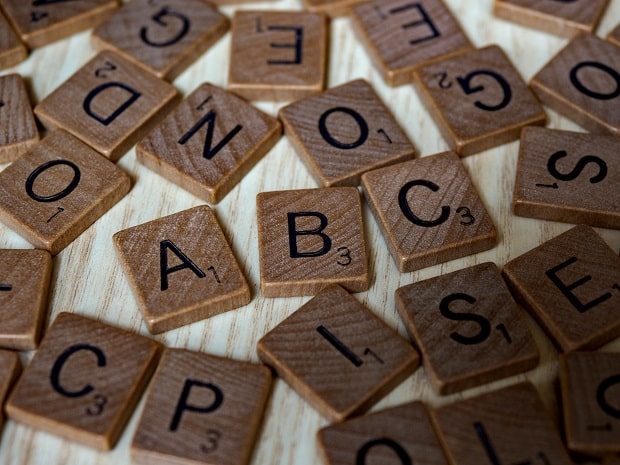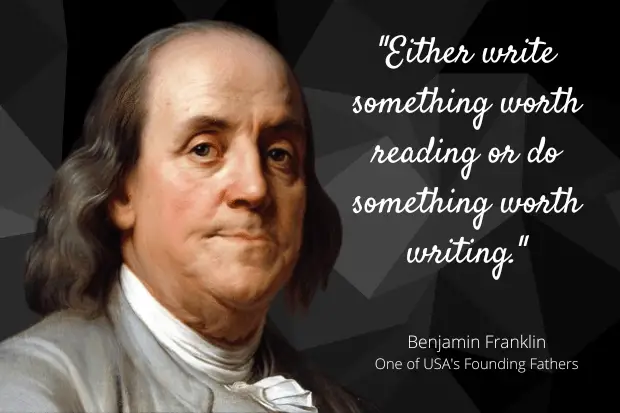
Have you heard the best advice for new writers? Keep practicing your writing skills daily!
The number of creative writing exercises for beginners can be overwhelming. To save you time, and help you kickstart your career as a freelance writer, here’s a list of the best ones for you to try. You don’t need to spend hours doing these exercises. As little as ten minutes a day will be enough to get those creative juices flowing. Your creative writing style will improve before you know it.
Fun and Easy Creative Writing Exercises for Beginners:
1. As Easy as ABC
Use the alphabet to spark creativity. You could start by writing a story containing a word that begins with each letter of the alphabet. Or, if you are looking for an extra challenge, try writing a poem. Each line of your poem could begin with a different alphabet letter. This will encourage you to think more creatively about sentence structure. It will stretch your vocabulary too, so grab those thesauruses and get started!

2. Use Prompts
If you lack inspiration, plenty of writing prompts are available online. You could also use the world around you as prompts. Pick a sentence, or headline, from a magazine, or use a line from your favorite book. You could even use your dreams. Keep a notepad beside your bed so you can jot down your dreams when you wake up. Those notes are the perfect prompt for a short story. Don’t worry about making them realistic, just go with it.
3. Freestyle Writing
Some creative writing exercises for beginners are less structured. If this appeals to you, you could try freestyle writing. You just sit down and write. Don’t think about what you are writing, just write. It will become a stream of consciousness but don’t worry about whether it makes any sense. You might even find some interesting ideas come from this exercise. You can develop them later. Julia Cameron calls these ‘morning pages’ in her blog The Artist’s Way. It doesn’t matter what you write, the important part is that you are writing. Isn’t that freeing? It’s almost the same as what some artists do when they doodle on their sketchpads. They draw random figures until inspiration or idea comes to compose those sketches into a masterpiece.

4. Change the Narrator
Take a piece of writing and change the person telling the story. If it is written in the third person, rewrite it in the first person. How does this change the story? Think about the information that is included/excluded by a change in the narrator. This is a very useful exercise to make you think about the techniques of writing in the first or third person. It will help you understand the impact of both methods and when you might want to use them.
5. Different Points of View
One of the most common creative writing exercises for beginners is writing from a different point of view. Using a book or story you are familiar with, write a new story with one of the peripheral characters as the main character. That’s exactly how spin-offs are made. Take, for example, the 1993 blockbuster movie The Fugitive starring Harrison Ford. The screenwriters used Tommy Lee Jones’s character Deputy Marshal Gerard from that film and created a spin-off called U.S. Marshals, released in cinemas in 1998. You could even write from the point of view of an animal or inanimate object. As a beginner, you will find this a useful exercise to encourage you to tell a story differently.
6. Journaling
Journaling is a great way to create a habit of writing daily. You could write about your day or your hopes for the future. You don’t need to show anyone what you write so you are free to be as open, or imaginative, as you like. Journaling about a specific part of a day is also possible. For instance, you could focus on one of your meals and describe it in detail. What did you eat? Who were you with? What could you see or smell around you? For all you know, this could lead to a flourishing career as a freelance food writer.
7. Blogging
This is like journaling in that you should commit to posting articles regularly. The difference is that you make your blog available to others. Pick a subject that you are knowledgeable about and get started with your blog. Not only will this help you practice your writing, but it is also a great way to build up a portfolio. If you want to make a career out of writing, you will need to show examples of your work. A blog will help you achieve that.
8. Write to yourself
Is there advice or information you wish to give your younger self? Do it! This is one of my favorite creative writing exercises for beginners. You can write a letter to your younger self. Pass on that advice you wish you had at the time. Tell yourself things will work out in the end. It is a great opportunity to develop your writing skills. You might also find it therapeutic!

9. Advertise
Writing in a different style from normal is a great way to flex that creative muscle. Pick an object around your home and write an advert for it. How would you sell that bottle opener? What selling points does that chair have? You can also try writing in different advertising styles. For instance, you could write the script for a TV or newspaper ad. You could even try writing a listing for a Facebook marketplace. If you have time, try writing the same copy in various styles, and see how your writing changes.
10. Instructions
Pick a task or activity that you do every day. Write instructions on how to do it for someone who has never done it before. I’m not suggesting you write an instruction manual with lots of technical jargon. Just write a simple and easy-to-understand step-by-step procedure for carrying out that activity. Writing in this different style will help you think in non-traditional ways. It also encourages you to practice writing detailed descriptions.

One great way to develop your story is to read it to children (provided it’s appropriate for their age) chapter by chapter like a continuing saga.
11. Tell Someone Else’s Story
Think of a tale that has been told to you and use this as your starting point. You might find details missing or parts you can’t remember. Don’t worry about that. Flesh these out with your imagination. Remember, a lot of bestselling fiction novels were inspired by true stories. The authors just invoke their proverbial creative licenses to make those tales more epic.
12. Flash Fiction
Writing flash fiction can be a fun and challenging exercise. In this exercise, aim for around 500 words. Use the same structure and include the usual elements of a story as much as possible. You should have a strong plot and some conflict and take the time to develop your characters. This won’t be easy with such a small word count. You will learn to be concise and deliberate with your words, though!
13. Use Images
You can also take inspiration from images and pictures around you. For example, take a few images from different pages of a magazine. Think about how you might link them and what story brings them together. Write that story. Did you know that a box of old black-and-white photographs inspired Ransom Riggs’ bestselling novel Miss Peregrine’s Home for Peculiar Children? This book was even adapted into a major film.
14. People Watching
This is a game I like to play sometimes when I’m sitting in a car or inside a café. Look around at the people walking past or standing nearby. Make up a back story for them and think about what happens next. Consider the next week in their lives. What events will happen? How will they react? The inspiration is all around you – you can even do this when you are traveling. Grab a notebook and get started.
15. The Benjamin Franklin Method
Benjamin Franklin wanted to improve his writing technique, just like you. He came up with this method, which proved to be very effective. Begin by reading a passage from a book. Take short notes as you go to summarize the gist of what you read. Then, in a day or two, look at your notes and try to recreate the original passage. You, almost certainly, won’t get it exactly right, but that is part of the method. You then compare your writing to the original and consider the differences. This will highlight where you could improve your sentence structure and word choice. You will be a better writer as a result.

16. Change the Rules
This exercise will test your creativity to the hilt. Think about some of the societal rules we follow every day. For instance, we get dressed before we leave home…what would happen if we didn’t? Write a short story set in a world where we don’t follow that rule. Consider what would change as a result and how your characters would deal with it.
Sum Up
I hope these creative writing exercises for beginners give you some inspiration. It doesn’t matter which exercise or combination of exercises you choose; the important thing is that you write daily if you can. The more you practice, the better you will become. Next, you may want to check how to become more creative in general.
Hey there, welcome to my blog! I'm a full-time entrepreneur building two companies, a digital marketer, and a content creator with 10+ years of experience. I started RafalReyzer.com to provide you with great tools and strategies you can use to become a proficient digital marketer and achieve freedom through online creativity. My site is a one-stop shop for digital marketers, and content enthusiasts who want to be independent, earn more money, and create beautiful things. Explore my journey here, and don't forget to get in touch if you need help with digital marketing.

